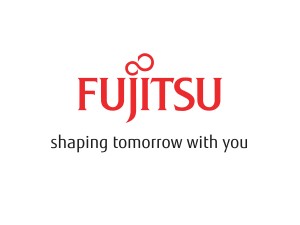 Traditional IT projects have followed a “Define-Design-Develop-Deploy” mindset, where most or all of the computational resources were owned, operated, and maintained by the developing organization. Cost estimates for system acquisition were often wrong, and virtually always unrealistically low. Some of the reasons for the inaccurate forecasts included: Changing requirements; cost increases from system production changes; and cost increases from changing hardware and software suppliers. The emergence of the cloud enables the same practitioners to consider a “Source-Integrate-Manage” framework were computational resources can be assembled across an ecosystem and selected based on specific needs. Regardless of the system employed, the proper framework for cost considerations should not change.
Traditional IT projects have followed a “Define-Design-Develop-Deploy” mindset, where most or all of the computational resources were owned, operated, and maintained by the developing organization. Cost estimates for system acquisition were often wrong, and virtually always unrealistically low. Some of the reasons for the inaccurate forecasts included: Changing requirements; cost increases from system production changes; and cost increases from changing hardware and software suppliers. The emergence of the cloud enables the same practitioners to consider a “Source-Integrate-Manage” framework were computational resources can be assembled across an ecosystem and selected based on specific needs. Regardless of the system employed, the proper framework for cost considerations should not change.
System Engineers have visualized total life-cycle costs using an “Iceberg Model”. The Iceberg Model consists of nine components that are relevant to total Cloud life-cycle costs:
- System Acquisition Costs – The research, design, testing, construction, and production of a system;
- Operations Costs – The costs for personnel, facilities, utilities and energy consumed;
- Software Costs – The costs for operating and maintaining the software;
- Maintenance Costs – Any costs that are associated with customer service, in-field maintenance, etc;
- Supply Support Costs – Any costs that are associated with spare system components;
- Training Costs – The cost to train operators and users in system maintenance and use;
- Technical Cost Data – The cost for data that is used to design, and to evaluate the design of the system;
- Test and Support Equipment Cost – The cost for any equipment that is used to test the system, or to assess the system operation;
- Retirement and Disposal Costs
An approach of sourcing and integrating available computational resources for: SaaS, IaaS, or PaaS will reduce or eliminate several of the total Cloud life-cycle cost categories. Another important benefit is that Cloud Service Provider contracts can also be used to mitigate the risk of cost increases from inflation, and requirements churn; and competition between Cloud Service Providers are likely to drive costs for IaaS, PaaS, and SaaS associated hardware and software costs lower.
Figure 1. Iceberg Total Life-Cycle Cost Model
Figure one illustrates the total lifecycle model using the Iceberg Model. With the cloud:
- System Acquisition Costs – A definition of the need for the system will not change, but the framework for system design changes to “Source-and-Integrate”. Services can truly be made available “on-demand” and increased agility can be integrated into the design and managed using contractual agreements rather than developing solutions;
- Operations Costs – The costs for personnel, facilities, utilities, and the energy that is consumed are a fraction of those in a conventional setting, and these costs can be managed using contractual agreements that commit suppliers thereby eliminating the effects of inflation, staffing shortages, rising energy costs, or natural disasters;
- Software Costs – Software costs are managed using contractual agreements, but the system designers and system managers must be certain that the software remains compatible and that software suppliers carefully manage changes in their product to ensure continuous compatibility across all interfaces;
- Maintenance Costs – When a cloud solution is employed, there is one version that is managed across multiple users rather than multiple versions across multiple users thereby eliminating the need for replication of customer service and maintenance on separate installations;
- Supply Support Costs – Supply support costs are minimized since the Cloud service provider is now responsible for maintaining and servicing their system;
- Training Costs – Training costs shift to instilling the requisite skills for the use of the cloud service and the maintenance of the customer side of the interface;
- Technical Cost Data – The type of data that is needed shifts to data that relates to the robust operation of the system on the Cloud customer side;
- Test and Support Equipment Costs – The cost for any equipment that is needed to test the system or to assess system operations shifts to the Cloud service provider; and
- Retirement and Disposal Costs – Since this is a utility model, when it comes time to retire the system simply pull the plug.
An approach of sourcing and integrating available computational resources for: SaaS, IaaS, or PaaS will reduce or eliminate several of the total Cloud life-cycle cost categories as noted above. The technology is here, but the critical challenge that will face Cloud customers will involve governance and systems management more than ever. Nevertheless, this is a wonderful and exciting time for both the IT community and the business community that it serves.
Article written by John Kendrick, Principal, Enterprise Business Services at Fujitsu America – John Kendrick is a principal and thought leader with Fujitsu in Sunnyvale, CA. He is leading the Lean Optimization Practice for Fujitsu in the United States and has more than 15 years of lean experience in manufacturing, finance, telecommunications, and healthcare. John holds a master of engineering degree in simulation and modeling from Arizona State University; master of applied statistics from Penn State, and a master of business administration infinance from the University of Pittsburgh. He is a Certified Six Sigma Master Black Belt, a senior member of the American Society of Quality (ASQ), is ASQ-certified as: CSSBB, CRE, CSQE, CQM/OE and also holds two lean certifications.
